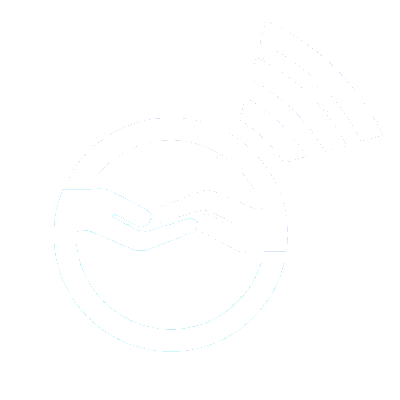Transdiagnostic Sleep and Circadian Intervention (TSC)
Problem: Studies consistently demonstrate a link between patient perceived and objective sleep disturbances (e.g., insomnia, hypersomnia, sleep duration) in adolescents with suicidal thoughts & behaviors
Solution: The Transdiagnostic Sleep and Circadian Intervention (TSC) is an evidence-based intervention that targets a range of sleep and circadian difficulties through different modules targeting adolescent sleep. We propose to adapt TSC for at-risk adolescents identified in primary care for youth in a randomized controlled trial (RCT)
Study: We will conduct a RCT comparing the Transdiagnostic Sleep and Circadian Intervention (TSC) + Sleep Feedback vs. Sleep Feedback alone (weekly report of sleep tracking that is texted or emailed)
More Background: Experts emphasize that ideal foci for effective prevention interventions for suicidal thoughts and behaviors (STBs) are proximal, robust and modifiable, with broad acceptability and accessibility for population-level impact. Sleep difficulties may be a particularly promising target for youth STB prevention efforts. Studies consistently demonstrate a direct and temporal link between sleep disturbances in adolescents and STBs and are included among the expert consensus set of warning signs for suicide. Furthermore, gross disparities in sleep between Black youth and their White peers (e.g., shorter sleep duration, poorer sleep quality, more variable sleep timing), as well as unique and specific barriers to healthy sleep for Black youth (e.g., racial discrimination) are directly linked to elevated risk for depression and STBs. Yet, no intervention targeting sleep difficulties has been examined among youth at-risk for STBs nor tailored to Black youth.
In this project, we will optimize acceptability, engagement, and scalability of a modularized intervention that targets a range of sleep and circadian difficulties using evidence-based principles—the Transdiagnostic Sleep and Circadian Intervention (TSC)—for youth at-risk for STBs, including Black youth, among whom mental health services are more stigmatized.
Study Goals: Overall, in this project we want to highlight the interventions acceptability, engagement, and the ability to scale up to reach even more populations. Using this intervention that targets a range of sleep and circadian difficulties using the finding of previous studies, - the Transdiagnostic Sleep and Circadian Intervention (TSC)- is made especially at-risk youth for STBs, which includes Black youth. Among whom mental health and services are more negative labeled.
More information about the study below
-
In Aim #2 of TSC, there will be 15-20 participants going through a sleep intervention to try to improve their sleep habits in young people who have mood symptoms and/or suicidal thoughts and behaviors. Over this 5-month period, participants will be going to at least 6-8 sessions with a Sleep Therapist. Along with attending those sessions, participants will be wearing a sleep watch, completing daily sleep diaries, and wearing bright light and blue light blocking glasses. Finally, participants will have an exit interview.
-
Participants will attend a 45-minute long session with a Sleep Therapist every 1-2 weeks. In these sessions the participants will discuss their past week, their sleep diaries and sleep activity throughout the week and some changes that could be made at home with any topics that may come up during the sessions. At three separate times throughout the intervention participants will be asked to complete a set of questionnaires. Each time participants will get paid ten dollars for completion. The payment is based on how many of the questionnaires are completed.
-
One important part of the of the intervention is the use of a sleep watch and daily sleep diaries. By wearing the sleep watch and filling out the sleep diaries experts can record sleep patterns and help identify some factors that may lead to the improvement or worsening of sleep. They also can better understand the connection between sleep, mood, and suicidality. Participants will be wearing this sleep watch and completing a morning and evening diary for up to 5 months. The sleep watch is the portion of this intervention is when the experts can look at the participants sleep based off their activity throughout the day and night. Participants will be paid for both the daily sleep dairies and wearing the sleep watch. Payment is based on the number of Sleep Diaries completed and length of time in the study.
-
Payment will go as follows:
1-month:
Activity watch: ($0.25/day)
Sleep Diaries: ($0.25/day)
2 months:
Activity watch: ($0.50/day)
Sleep Diaries: ($0.50/day)
3 months:
Activity Watch: ($0.75/day)
Sleep Diaries: ($0.75/day)
4 months:
Activity Watch: ($1.00/day)
Sleep Diaries: ($1.00/day)
5 months:
Activity Watch: ($1.00/day)
Sleep Diaries: ($1.00/day)
-
The next core element in Aim#2 is the use of bright light and blue light glasses. These glasses help set the participants daily rhythms. The Bright light glasses will be worn when the participant wakes up for 30 minutes. By wearing these glasses, it will help with the participants alertness in the morning. In the evening, participants be wearing blue light glasses for up to 2 hours before bed. The light that these glasses are blocking is a type of light that our bodily rhythms are uniquely sensitive too.
Blue light glasses
-
Lastly, there will be an exit interview that will be around an hour long. In this interview participants will be asked about this sleep intervention. Participants will be asked to report what they liked, disliked and suggestions about the intervention for the future. This interview will be done research staff. Participants will be paid $20.00 for this interview. Participants can earn up to $50.00 if all three sets of questionnaires are completed along with this exit interview.
Investigators
Sleep watch
Bright light glasses
Tina R. Goldstein, Ph.D.
Pittsburgh Foundation Endowed Professor in Psychiatry Research University of Pittsburgh
ARIEL A. WILLIAMSON PHD, DBSM
Assistant Professor of Child Behavioral Health and Clinical Psychology
The Ballmer Institute for Children's Behavioral Health, University of Oregon







